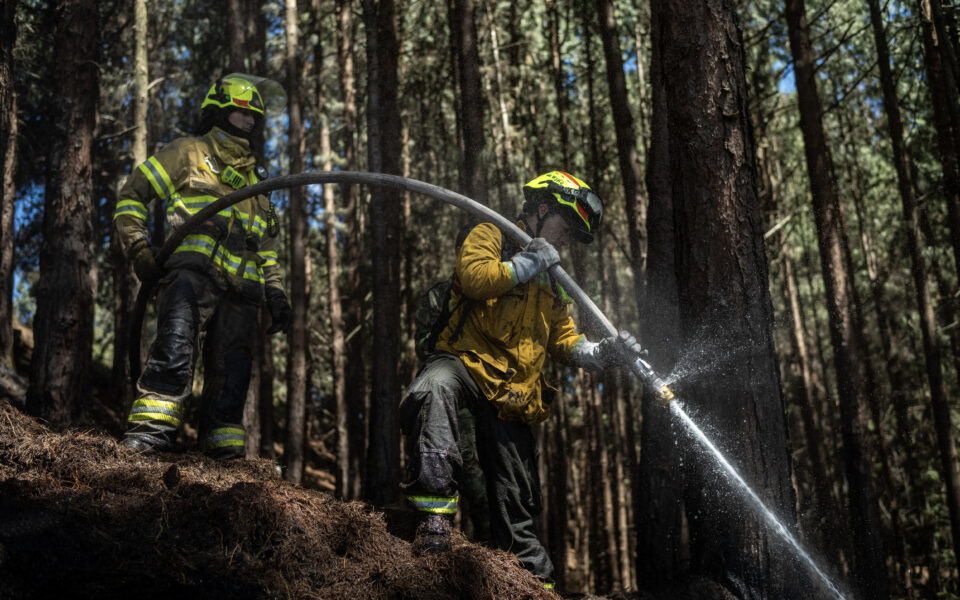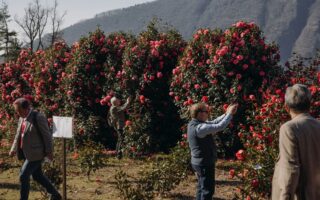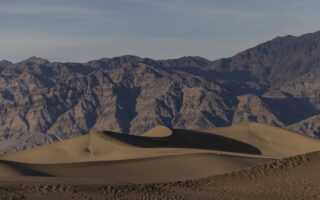Rains are scarce in the Amazon. Instead, megafires are raging

By this time of the year, rain should be drenching large swaths of the Amazon rainforest. Instead, a punishing drought has kept the rains at bay, creating dry conditions for fires that have engulfed hundreds of square miles of the rainforest that do not usually burn.
The fires have turned the end of the dry season in the northern part of the giant rainforest into a crisis. Firefighters have struggled to contain enormous blazes that have sent choking smoke into cities across South America.
A record number of fires so far this year in the Amazon has also raised questions about what may be in store for the world’s biggest tropical rainforest when the dry season starts in June in the far larger southern part of the jungle.
Last month, Venezuela, northern Brazil, Guyana and Suriname, which encompass vast stretches of the northern Amazon, recorded the highest number of fires for any February, according to Brazil’s National Institute of Space Research, which has been tracking fires in the rainforest for 25 years. Fires also burned across Colombia’s Andes highlands, as well as parts of that country’s Amazon territory.
The fires in the Amazon, which reaches across nine South American nations, are the result of an extreme drought fueled by climate change, experts said.
The region has been feeling the effects of a natural weather phenomenon known as El Nino, which can worsen dry conditions that were intensified this year by extremely high temperatures.
That has made the rainforest more vulnerable to fast-spreading blazes, said Ane Alencar, the science director at the Amazon Environmental Research Institute in Brazil.
“The climate is leaving forests in South America more flammable,” she said. “It’s creating opportunities for wildfires.”
As countries continue to burn fossil fuels and the planet reaches the highest average temperatures measured by scientists, a grueling year of fires is expected around the world. Severe blazes have already ravaged large parts of the United States and Australia, and a worse season is forecast for Canada, where more acres burned last year than had ever been recorded.
Another year of devastating fires could be especially damaging in the Amazon, which stores vast quantities of carbon dioxide in its trees and soil. It is also home to 10% of the planet’s plants, animals and other living organisms.
If deforestation, fires and climate change continue to worsen, large stretches of the forest could transform into grasslands or weakened ecosystems in the coming decades. That, scientists say, would trigger a collapse that could send up to 20 years’ worth of global carbon emissions into the atmosphere, an enormous blow to the struggle to contain climate change.
Once this tipping point is crossed, “it may be useless to try to do something,” said Bernardo Flores, who studies the resilience of ecosystems at the Federal University of Santa Catarina in Brazil.
In January, wildfires burned almost 4,000 square miles of the Brazilian Amazon, an almost fourfold increase from the same month last year, according to Mapbiomas, a collective of climate-focused nonprofit organizations and research institutions.
In February, more than two-thirds of the fires in Brazil have occurred in Roraima, the country’s northernmost state. They have burned homes and subsistence crops in several Indigenous villages, leaving a thick haze over rural areas and creating hazardous air quality in the state’s capital, Boa Vista.
As a result of the prolonged drought, the vegetation in this part of the Amazon has become “combustible,” Alencar explained. “Roraima is like a barrel of gunpowder right now.”
Researchers say that most of the fires sweeping through the region were initially set by farmers using the “slash and burn” method to allow new grass to grow on degraded pastures or to fully clear recently deforested land.
Fueled by the dry conditions and searing temperatures, many of these fires burn out of control, spreading miles beyond the area that was originally set ablaze.
“Fires are contagious,” Flores said. “They modify the ecosystem they pass through and increase the risk for neighboring areas like a virus.”
In Roraima, the blazes have mostly burned areas within the Lavrado, a unique savannalike region nestled within the Amazon, said Erika Berenguer, a senior research associate at the University of Oxford and at Lancaster University.
This ecosystem, known for its wide-open grasslands and a rare population of wild horses, overlaps with several protected areas, including the Yanomami Indigenous reserve, where illegal mining and forest destruction have led to a humanitarian crisis.
After months of scarce rains, dense rainforest that is typically too humid to catch fire has also become more susceptible to flames.
In Roraima, the fires have now spread to protected forests and Indigenous lands in the southern region of the state, according to Haron Xaud, a professor at the Federal University of Roraima and a researcher at Embrapa Roraima, an institute monitoring the fires.
While fires are common in drier boreal forests in Canada and other parts of the Northern Hemisphere, they do not naturally occur in the much-wetter Amazon rainforest. Tropical forests are not adapted to fires, Xaud said, “and degrade much faster, especially if the fire becomes recurrent.”
Some of the wildfires started by humans in the Amazon have grown into “megafires,” typically defined as blazes that burn more than 100,000 acres of land or that have an unusually significant effect on people and the environment. These kinds of fires, Flores said, will become more frequent as the planet warms and deforestation damages the Amazon’s ability to recover.
Environmental factors are already changing the Amazon. Dry seasons are becoming longer, and average rainfall during those periods, when rains diminish but do not stop altogether, has already dropped by one-third since the 1970s, Berenguer said. That has made El Ninos increasingly dangerous.
“When you have all of these factors together, you have the conditions for a perfect storm – the perfect firestorm, that is,” Berenguer said.
The fires in the Amazon region have had a striking effect on carbon emissions. In February, wildfires in Brazil and Venezuela emitted almost 10 million tons of carbon, the most ever recorded for the month and about as much as Switzerland emits in a year, according to data from Europe’s Copernicus Atmosphere Monitoring Service.
The El Nino pattern should wind down in a few months, bringing some respite to the Amazon.
But more devastating fires could erupt if the parched soil does not receive enough rainfall in the crucial wetter months ahead, Alencar said.
“The question is whether the forest can recover before the dry season, whether the Amazon can recharge its batteries,” Alencar said. “Now it all depends on the rains.”
This article originally appeared in The New York Times.






